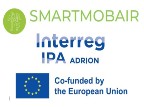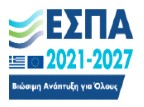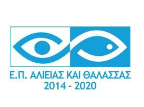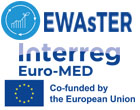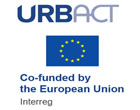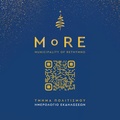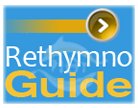Theater: 'Le Bourgeois Gentilhomme'
click to enlarge
Concert: 'The art and passion of the Cretan dance'
click to enlarge
Theater: 'Shoe maker'
click to enlarge
Concert: 'Artistic Folk Music'
click to enlarge
Earth Stories “kat-ART-i”, the Artist Association for the promotion of Art
Earth Stories
How was the earth made? What is there inside it? How were the animals born? How do seasons change? Why did a renaissance knight travel so far to find the love of an arrogant princess? What is the world’s most beautiful story? An original fairytale show mixed with music and songs, which take us on a journey to different worlds. A musical story-telling invites the audience to explore the mysterious paths of improvised instruments and the sounds of the earth. “kat-ART-i”, the Artist Association for the promotion of Art, introduces a different way of interactive fairy tale performance aiming to make the children experience a deeper contact with fairytales. Moreover, it offers them the opportunity to take part, act and react.
Zefiro Torna
The Romeo & Julia Kören (Romeo & Juliet Choir) is a dramatic vocal ensemble based at The Royal Dramatic Theatre in Stockholm. Since its founding in 1991 the Kören has gained an international reputation as guardian and renewer of the rich musical treasure of the Renaissance. Zefiro torna is the Madrigal Comedy-production in two acts. The first act reveals amorous adventures and is devoted to music by the late Renaissance vocal master Claudio Monteverdi. The second half revives music by such great composers as Campion, Farmer, Janequin, di Lasso, da Nola, Del Encina etc. Musical pieces are combined, evoking a story within the performance. The Romeo & Julia Kören gives theatrical expression to the European musical heritage effectively offering audiences a new and inspiring experience.
Except for a number of performances at the Royal Dramatic Theatre and other places all around Sweden, Zefiro torna has also been performed 2008-2010 in Kaliningrad, Vilnius, New York, Harstad, Dubrovnik and is going on a two-weeks long tour to the USA in April 2010.
Canta Napoli
Birthplace of Farinelli, Enrico Caruso and Tito Schipa, home of Scarlatti and Pergolese, the world has long turned to the sun drenched city for thrilling music, from the villanesche alla napoletana which delighted all of Europe in the 1500s to the celebrated Neapolitan songs carried around the world by Caruso.
True to its name (Fire and Ash) Fuoco E Cenere breathes new life, phoenix-like, into forgotten masterpieces. Fuoco E Cenere is led with brio by Jay Bernfeld, widely acclaimed as soloist and chamber musician. His complicity with the art of singing and his fascination for the written and spoken word are reflected in the Fuoco E Cenere‘s highly original repertoire.
The interpretations of Fuoco E Cenere magnify image and expression of superb musical and poetic texts, enabling them to shock the public by their beauty..
Markos Antonios Foskolos: 'Fortounatos'
Fortunatos (‘lucky’) by Markos Antonios Foskolos is one of the three surviving comedies of the Cretan Renaissance theatre (the other two are Katsourbos by G.Hortatsis and Stathis), and is perhaps the most “theatrical” of all because of its descriptive means, the comic characters, and its direct way of expression. It is written in the eastern Cretan dialect of the time, during the period that Turks besieged the Venetian city of Candia-Kastro. It comes down to us through the manuscript of the poet himself, which is dated around 1655. We have a lot of biographical information about Markantonios Foskolos, thanks to the tireless research of the main researcher of his work, Mr. Alfred Vincent.
Pulcinella
Although Giovanni Battista Pergolesi’s skill as a composer of sacred music was remarked while still a student in Naples, the young man’s farrest reaching influence would soon make itself felt in the world of the theatre. After a particularly catastrophic earthquake devastated Naples Pergolese vowed to return to the world of sacred music and created his Stabat Mater, the most often printed score of the 18th
century.
In far off Paris his comic operas inspired quarrels, le Querelle des Bouffons- which pitted fans of Italian opera buffo against the aficionados of the serious French works of Lully and Rameau.
Pulcinella and Pergolese: two of Naples favorite sons were forever linked when Igor Stravinsky penned his ballet in 1920. Noisy, impolite and oh! So politically incorrect the puppet Pulcinella has delighted audiences the world over The antics of Pulcinella and the hauntingly melodic sonorities of Pergolesi breathe new life into the age-old Commedia dell’Arte!
Camerata of the Friends of Music- G.F. Handel - Alessandro Severo
The opera of G.F. Handel Alessandro Severo belongs to the so-called “pasticcio” type. No, it has nothing to do with the famous Greek food... but with a composition whose components are musical parts of previously written works. Most precisely Alessandro Severo is Handel’s second (the first one is the opera Orestis) “pasticcio work” composed exclusively from the composer’s previous works. Thus it is a new opera, in which, apart from the arias and orchestral parts that derive from Handel’s previous operas, the beautiful introduction (overture), the dramatic recitative with strings (recitativo accompagnato), and the dialogue parts that help the story to unravel (recitativi secchi),accompanied by the basso continuo, are all new music.
The story of the opera takes place in Rome, in 225 B.C., when the 16 year old new emperor Alessandro Severo, marries the young Salustia, daughter of a patrician. Giulia, Alessandro’s mother, fearing that she will lose her authority, leads Salustia with deceit in exile, opposing her son’s will. It is a story full of Roman political and emotional intrigues, dressed with the most beautiful music of Handel that he himself chose from his large musical oeuvre.
A Baroque Jewel Box - Il Fondamento/L. Devos
Whoever is asked to name three household names of the Baroque will no doubt come up with those of Bach, Handel and Vivaldi. But do we really know their gems beyond the surface? Bach’s first Orchestral Suite in C Major (BWV 1066A), for instance, is generally performed from a Leipziger score dating from 1724/5, even though recent research has pointed towards earlier origins in Cöthen, and to a slightly different instrumentation. And what about Handel’s Concerto Grosso in B flat Major, opus 3 no. 2 (HWV 313)? Its first and third movements are based on the composer’s Brockes Passion and thus merit to be played with lyrical fervour. Finally, there is the religious legacy of Antonio Vivaldi: a stunning and technically challenging universe of both celestial and earthly passions, here represented by the solo motets “In fuore iustissimæ iræ” (RV 626) and “Nulla in mundo pax sincera” (RV 630), and the Sinfonia in B minor “Al santo sepolcro” (RV 169). In this concert, Il Fondamento and Liesbeth Devos will defy the narrow borders between the vocal and orchestral, bringing you fresh and shiny renderings of seemingly familiar jewels.
Remede de fortune - Guillaume de Machaut.
The work Remède de fortune (Remedy of Fortune) by Guillaume de Machaut is probably the most important French poem about love of the XIV century. Its influence has been considerable in the whole Europe as poetic and musical model. It is on the turning point from the troubadour and trouvere tradition towards the new era, with the newborn musical polyphonic forms of the XV century. The story is about a poet, in love with a noble woman. He complains to Fortune for not being brave enough to talk to her. But suddenly, Esperance (Hope) comes and gives him the courage to believe in his love for the lady.
In this presentation the Complainte, the longest piece among the others, where the poet complains to Fortune, is dressed with a special event of a contemporary dance creation. Contemporary body language in counterpoint with a 14th century’s poetical and musical work will reveal a magic artistic experience where movement, human and instrumental voice and silence will give place to each other.
The CD won the Diapason d’Or of September 2009 and the Diapason d’Or of the year 2009..
The Early Mozart- The infant prodigy from Salzburg Mozart Quartett Salzburg & Dionysis Grammenos, clarinet
The renowned Mozart Quartett Salzburg performs the finest chamber music from the Mozart city of Salzburg in its very own impressive style. Refreshing and enjoyable music by the 14 year old genius, like his first String Quartet KV 80 and his “Salzburger Divertimento” KV 136 sound like treasures of the early quartet repertoire by Johann Christian Bach and Giovanni Battista Sammartini - both of them composers who have met and grown to appreciate in Milan and London the travelling child prodigy.
The highlight of the evening will be Mozart’s famous “Stadlerquintett” KV 581 with the participation of Greek clarinet virtuoso Dionysis Grammenos, whose golden clarinet sound is a balsam for the soul.
Earth Stories “kat-ART-i”, the Artist Association for the promotion of Art
Earth Stories
How was the earth made? What is there inside it? How were the animals born? How do seasons change? Why did a renaissance knight travel so far to find the love of an arrogant princess? What is the world’s most beautiful story? An original fairytale show mixed with music and songs, which take us on a journey to different worlds. A musical story-telling invites the audience to explore the mysterious paths of improvised instruments and the sounds of the earth. “kat-ART-i”, the Artist Association for the promotion of Art, introduces a different way of interactive fairy tale performance aiming to make the children experience a deeper contact with fairytales. Moreover, it offers them the opportunity to take part, act and react.
Liogeniti
“Liogeniti” is a perfromance based on one of the most famous Greek traditonal poems (Paralogi), found in various areas of Greece. Giorgos Kalogerakis, a writter from Rethymno, rewrote it , in a theatrical form, using the Cretan dialect idiom. Studio Omma Theatre (Iraklio,Crete) presents this story in the form of a fairy tale. The story takes place in a museum of Modern Art, where the heroes become alive after closing time. The play is a comment, of the Studio Omma Theatre, on the relation between tradition and contemporary life.
The Merchant of Venice
It is really shocking that while reading The Merchant of Venice now, in 2010, someone realizes with horror how well timed and contemporary the work is. Money, loans, exploitation, usury: these are the central issues of the story, the same that we listen to in the news programs and we read in the newspapers every day.
The Fantom Lady by Pedro Calderon
THE HELLENIC TOURING CLUB of RETHYMNO in cooperation with the YOUTH THEATRE OF RETHYMNO present the work by CALDERÓN DE LA BARCA “The Fantom Lady”.
Carlo Goldoni “The Mistress of the inn”
“5th SEASON” presents “The Mistress of the Inn”, a comedy by Carlo Goldoni. This 2010 performance is arranged and directed by Themis Moumoulidis, stage designed and costumes by George Patsas, music by Thodoris Economou, choreographed by Elena Gerodimou and lighting by Nikos Sotiropoulos. “THE MISTRESS OF THE INN” is one of the most important plays of the Italian playwright. In this new staging proposal by “5th SEASON”, the comedy unravels into various places and times transporting the spectator to different eras.
Renaissance Festival: Closing Ceremony
We welcomed and cherished her in our city. For 15 days and nights she healed our wounds, gave birth to new ideas and defined a new course in our lives. Tonight she reveals her secrets, in a festivity of myth and dream in the heart of the Old Town at Mikrasiaton Square.




















